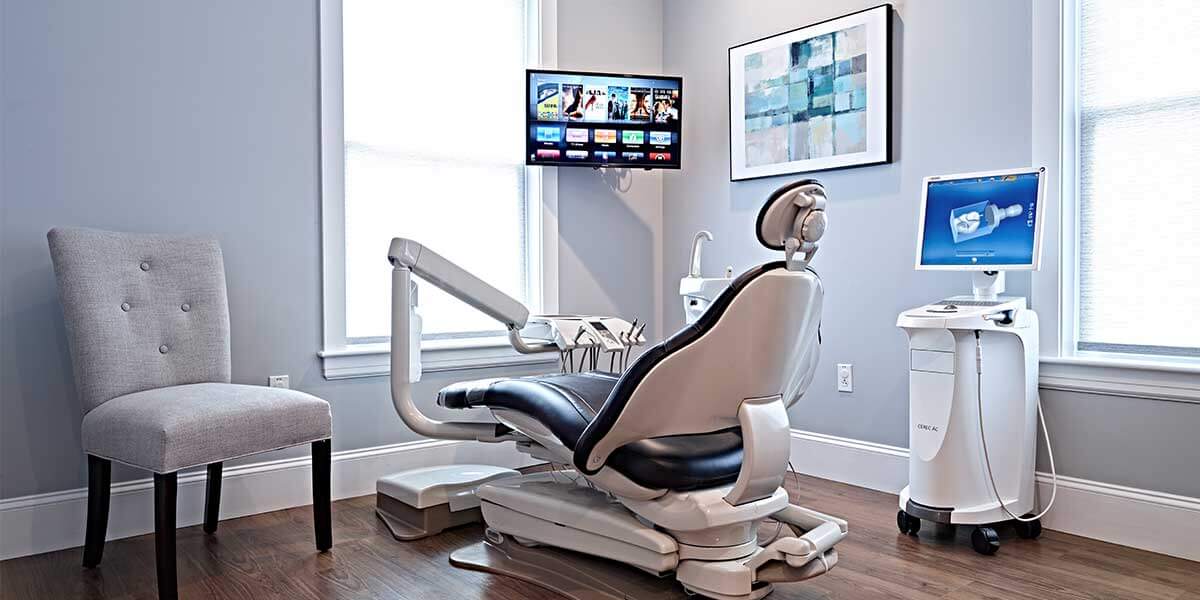General Services
Preventive and Diagnostic

Restorative

The first step in using CAD/CAM technology is tooth preparation. Next, a digital impression is taken that sends the prepared tooth’s exact dimensions into a computer. Afterwards, the computer software creates a virtual restoration replacement part for the missing areas of the tooth. The software then sends the virtual restoration data to the milling machine, where the replacement part is carved out of a solid block of ceramic or composite resin. The restoration is adjusted in the patient’s mouth and cemented or bonded in place.
Complete (Full) Dentures are made after all the teeth in the upper and/or lower jaw have been removed and the gum tissue has healed. The denture includes an acrylic base that is custom made in the dental laboratory and is made to look like natural gums. The denture sits over the gums or can be anchored to dental implants.
Removable Partial Dentures are made when only a few teeth need to be replaced. Removable partial dentures either attach to crowns on either side of the denture or to a metal framework that is then attached to the teeth on both sides of the partial denture. When worn during the day, removable partial implants can also be supported in place by dental implants. As opposed to being removable, partial dentures can also be anchored in place by being attached to dental implants.
Cosmetic

CAD/CAM is an acronym that stands for computer-aided design/computer-aided manufacturing. CAD/CAM technology is used to help the dental team fabricate precise shapes and sizes for dental restorations including inlays, onlays, crowns and bridges. This technology provides patients with durable, esthetic, well-fitted single and multiple tooth restorations in a more efficient manner.
Depending on the procedure(s) being performed, your dental restoration(s) may be able to be placed on the same day or next day instead of the usual wait of one to two weeks or more. Advancements in materials and technology have provided many options for great restorations that can both look great, provide superior strength compared to other restorations, and reduce the need for multiple visits to the office.
Other benefits of laser dentistry over traditional methods can include:
- Reduced heat and vibration
Little or no need for anesthetic - Faster treatment
- Increased rate of retention
- Fewer post-operative complications
Lasers can be used in dental procedures to:
- “Cure” or harden fillings
- Whiten teeth
- Reshape gum tissue
- Biopsy or remove soft tissue lesions and ulcers
- Remove areas of tooth decay
- Eliminate pockets of infected gum tissue
- Root canal therapy
- Correct ankyloglossia (tongue-tied)
- Oral surgery and extractions
When restoring damaged, broken, and decayed teeth, the goal is to return the tooth to its original strength, function, and esthetic. Biomimetic dentistry accomplishes all of this in a conservative, strong, and attractive approach.
Specialized Techniques

In-Office Bleaching usually requires only one office visit. A protective gel or a rubber shield is placed over the gums to protect the soft tissue. A bleaching agent containing carbamide peroxide is applied to the teeth, and a laser light is then used to enhance the action of the whitening agent.
At-Home bleaching requires an impression of the teeth to be taken to make a customized mouth guard to hold the whitening gel, containing carbide peroxide, against the teeth. Once the mouth guard is made, it is worn for a period of time, as instructed by our office. The amount of time may vary from a couple hours a day, or all night, to up to four weeks or longer, if desired.
Periodontal Treatments
Periodontists specialize in working around and under the gum areas of the patients mouth. Healthy gums are critical to overall oral hygiene and health. Our practice offers a wide range of services.
Endodontist In House
Our primary goal is to save your natural teeth whenever possible. Our practice offers Endodontic treatments, commonly referred to as root canal therapy. Endodontics is the treatment of the pulp and surrounding tissues of a tooth. The word “endo” comes from the Greek language and means “inside” or within. Endodontists work with the “inside” of a tooth.
Even small movement of the cracked tooth pieces during chewing can cause irritation to the tooth’s pulp, which causes pain. Similarly, when the bite is released, the crack can close quickly, causing sharp pain. Over time, the tooth pulp will become damaged. As this happens, the tooth will hurt more consistently. Cracks can sometimes lead to infections in the pulp tissue and spread to the surrounding gum and bone.
